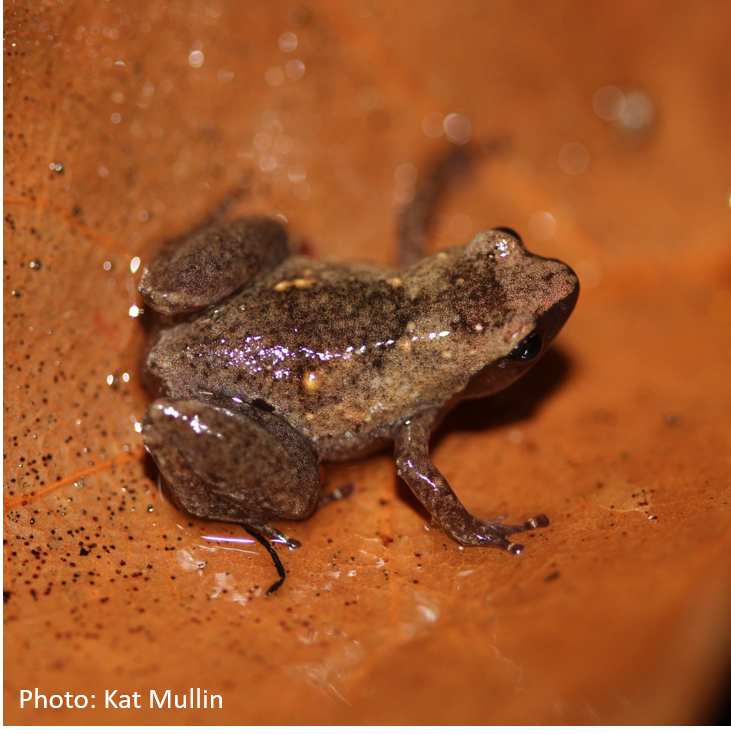By Izabela Barata and Jeff Dawson, Durrell Wildlife Conservation Trust
Anodonthyla vallani and Anilany helenae are microhylid frogs only known from the vicinity of their type localities, in Ambohitantely Special Reserve, Madagascar, where they occur at high-altitude forests at around 1500 m elevation. Anodonthyla vallani is found on tree trunks several meters above the ground and it is presumed to use tree holes as breeding sites. Anilany helenae is a terrestrial species and occupies the leaf litter, breeding is unknown and possibly involve terrestrial nests. Both species are assessed as Critically Endangered and listed as priority EDGE species. They are endemic to Ambohitantely and the reason for its designation as an Alliance for Zero Extinction site. Ambohitantely itself is important as it is the only protected area of humid forest situated on the central plateau to the north of Antananarivo. It forms part of the Southern Africa: Central Madagascar ecoregion and is classified as Critically Endangered by WWF. A study looking at the effects of fragmentation on amphibian populations at Ambohitantely was undertaken in 1996 and 1997, which resulted in A. helenae being discovered and formally identified, and A. vallani described later in 2010 from collected specimens. Since this study no further amphibian surveys were undertaken and, although isolated populations of both species persisted in the fragmented forest of Ambohitantely, little information was available to inform their management and conservation interventions. In 2018, Durrell initiated the first dedicated amphibian surveys looking at these endangered species in Ambohitantely in 20-years. This work has resulted in the first ever population estimates for these two endemic and Critically Endangered frogs from Ambohitantely Special Reserve. Our findings support previous observations related to habitat use, showing that species are indeed influenced by vegetation structure, such as bamboo numbers and canopy cover. Despite having moderate to high occupancies, we had relatively low population estimates for our sampled population (paper currently in press). Given the small population sizes and close relationship with vegetation structure, continuous habitat loss may have drastic consequences for their populations in the long-term. Since 2005, the annual deforestation rate has progressively increased in Madagascar. Ambohitantely remains as one of the last refuges of humid forests in the central plateau and, despite being a Special Reserve and having management plans in place, it is highly fragmented and still suffering forest loss. Our results serve as baseline information to describe future population trends and further understand the impacts of forest fragmentation on these species. Aligned with Durrell’s SAFE (Saving Amphibians from Extinction) strategy, we are committed to implement a long-term monitoring programme for threatened amphibians in Ambohitantely and further develop local capacity that can contribute to effectively deliver our long-term plans.
Photo © Kat Mullin

